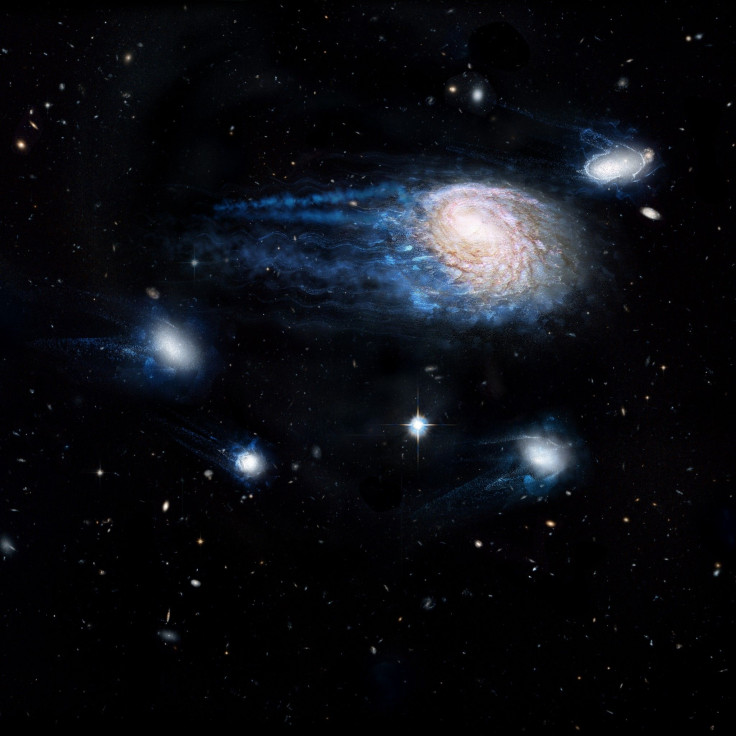Dark Matter May Be Responsible For Killing Off Galaxies Across The Universe, Researchers Say

It’s a mystery worthy of the Doctor’s attention — a whodunnit of truly cosmic proportions. All through the universe, something is killing galaxies before their time, literally sucking out their star-forming dust. The question is, what?
An international team of researchers based at the International Centre for Radio Astronomy Research (ICRAR) in Australia believe they have finally found the answer. In the process, though, they have discovered that the untimely death of galaxies through a phenomenon known as ram-pressure stripping is more common than previously thought.
In the normal course of events, a galaxy dies — or becomes quiescent — when its massive reservoir of gas and dust is used up during the formation of stars. This natural death occurs due to a process astronomers call strangulation — a fate that most likely awaits our galaxy, the Milky Way, too.
“Strangulation occurs when the gas is consumed to make stars faster than it’s being replenished, so the galaxy starves to death,” Toby Brown, a PhD candidate at ICRAR and Swinburne University of Technology and lead author of a new study published in the Monthly Notices of the Royal Astronomical Society, explained in a statement. “It’s a slow-acting process. On the contrary, what ram-pressure stripping does is bop the galaxy on the head and remove its gas very quickly—of the order of tens of millions of years—and astronomically speaking that’s very fast.”
Brown and his colleagues studied 11,000 galaxies using the Sloan Digital Sky Survey and the Arecibo Legacy Fast ALFA survey. Based on their observations, they argue the culprit is most likely dark matter — the mysterious substance that makes up 27 percent of the universe.
All galaxies, including our own, are believed to be embedded in and surrounded with halos of dark matter, which is what astronomers posit causes stars far from the galactic center to move as fast as those near the center.
“During their lifetimes, galaxies can inhabit halos of different sizes, ranging from masses typical of our own Milky Way to halos thousands of times more massive. As galaxies fall through these larger halos, the superheated intergalactic plasma between them removes their gas in a fast-acting process called ram-pressure stripping,” Brown said.
In their study, the researchers say this process, which Brown likened to a giant cosmic broom sweeping the gas from galaxies, is responsible for violently stripping away star-forming gas on a “widespread” scale throughout the universe.
“We’ve found this removal of gas by stripping is potentially the dominant way galaxies are quenched by their surrounds, meaning their gas is removed and star formation shuts down,” Brown said.
© Copyright IBTimes 2024. All rights reserved.






















